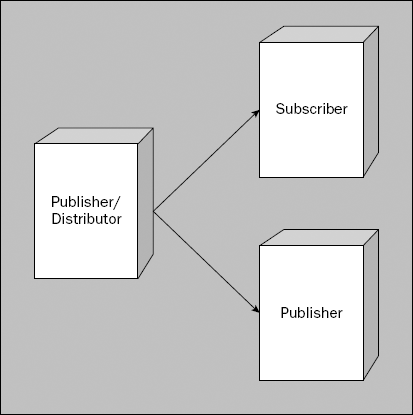20.3. Replication Topology
Over the years, Microsoft has outlined a number of replication topology models to describe how replication can be physically implemented. Let's look at some of these here as examples of how things are commonly implemented. It's worth noting that it is not only possible to mix and modify these models but actually rather common to do so.
NOTE
Your decisions about the type of replication you need to use and your replication model topology can be made somewhat independent of each other. That said, there is a chance that restrictions imposed by your physical topology, such as transmission bandwidth, will influence your decisions.
20.3.1. Simple Models
Let's start with a look at the more simple models. Once you've got the basic idea, we can move on to some variations and ways these models are mixed.
20.3.1.1. Central Publisher/Distributor
This is the default SQL Server model. As shown in Figure 20-8, you have one system acting as publisher and as its own distributor. This publisher/distributor supports any number of subscribers. The publisher owns all replicated data and is the sole data source for replication. The most basic model assumes that all data is being published to the subscribers as read-only data. Read-only access can be enforced at the subscriber by giving users SELECT permission only on the replicated tables.
Figure 20.8. Figure 20-8

Since ...
Get Professional SQL Server™ 2005 Programming now with the O’Reilly learning platform.
O’Reilly members experience books, live events, courses curated by job role, and more from O’Reilly and nearly 200 top publishers.

